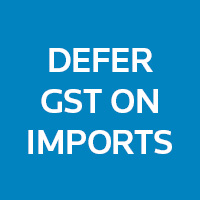Home as a place of business: CGT implications

The COVID-19 pandemic has resulted in more employees working from home than ever before. This, in turn, has resulted in such people being able to claim a range of deductions for various “running expenses” associated with working from home. These expenses include electricity, phone service, cleaning, decline in the value of equipment, furniture and furnishing repairs, and so on. To make things easier, the ATO even provided several “short-cut” options to claim “working from home” expenses (as opposed to claiming the relevant proportion of the actual costs).
In addition, many people who operate a business (e.g. as a sole trader or in partnership) have been required to use part of their home as a place of business – or may have been doing so for many years anyhow. They, too, are entitled to claim various “running expenses” associated with working from home.
Moreover, if part of the home has the character of a place of business and is set aside as such, then such persons would generally also be able to claim a portion of occupancy expenses (such as mortgage interest or rent, council rates, land taxes, house insurance premiums) in addition to running expenses. This is because part of the home is an asset that is used in carrying on their business. However, where part of a home is being used as a business to generate assessable income, the homeowner will not be able to sell their home CGT-free. Instead, a partial CGT main residence exemption will apply on the basis that part of the home has been used to produce assessable income (in the same way it would apply if part of the home had been rented at arm’s length).
The rules for calculating a partial CGT main residence can be difficult to apply – particularly in determining the appropriate apportionment and correctly applying any exclusions. A professional’s expertise here is invaluable.
More importantly, in cases where a partial exemption may apply because of part-business use of a home, then the CGT small business concessions may be available to eliminate, reduce or roll over any assessable capital gain. The ATO accepts this as being possible: “You may be able to apply one or more of the small business CGT concessions to reduce your capital gain unless the main use of the house was to produce rent.” (See the ATO website here).
However, the CGT small business concessions are difficult to apply at the best of times – let alone in the case where part of a home is used as a place of business. For example, issues may arise as to whether the homeowner meets the basic threshold requirement for the concessions (including the holding period rule), the effect of joint ownership of the home and, in the case of the 15-year exemption, whether the sale of the home (or CGT event) that gives rise to the capital gain is made in connection with the retirement of the taxpayer.
And of course, where a company or trust carries on the business, a crucial issue also arises as to whether the part of the home used in the business qualifies as an active asset, which is required for the CGT small business concessions to apply.
These (and related) issues require the expertise of a professional. So if you find yourself in this position, your first port of call should be your trusted accountant.
The content of this summary is general by nature. We therefore accept no responsibility to persons acting on the information herein without consulting with DSV Partners.
Liability limited by a scheme approved under Professional Standards Legislation.










